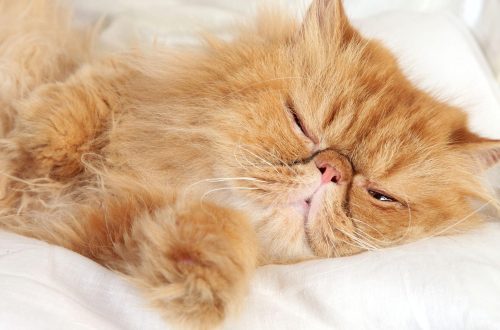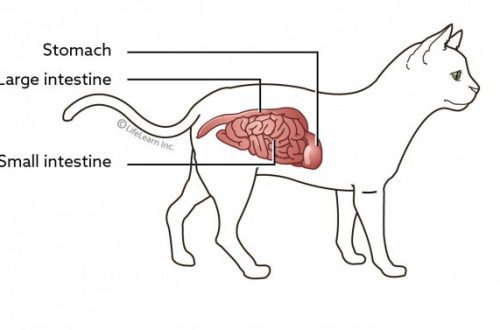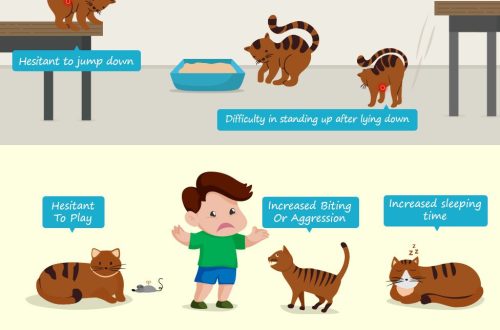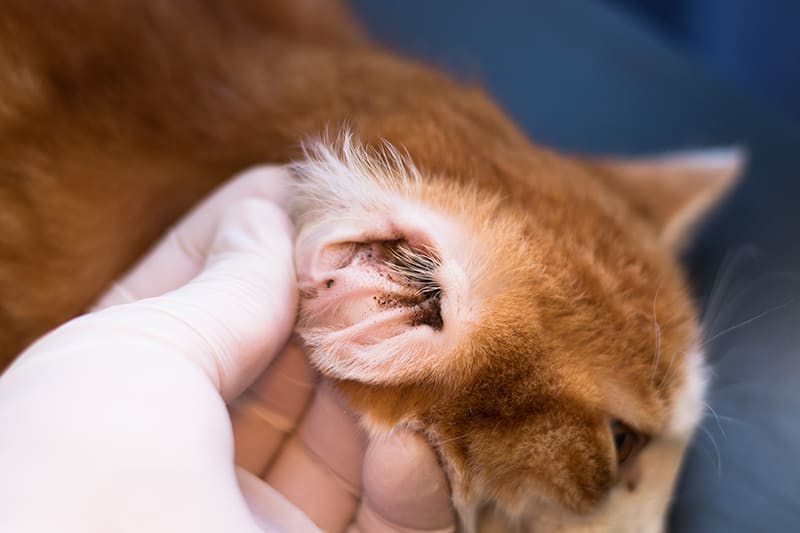
Ear problems in cats
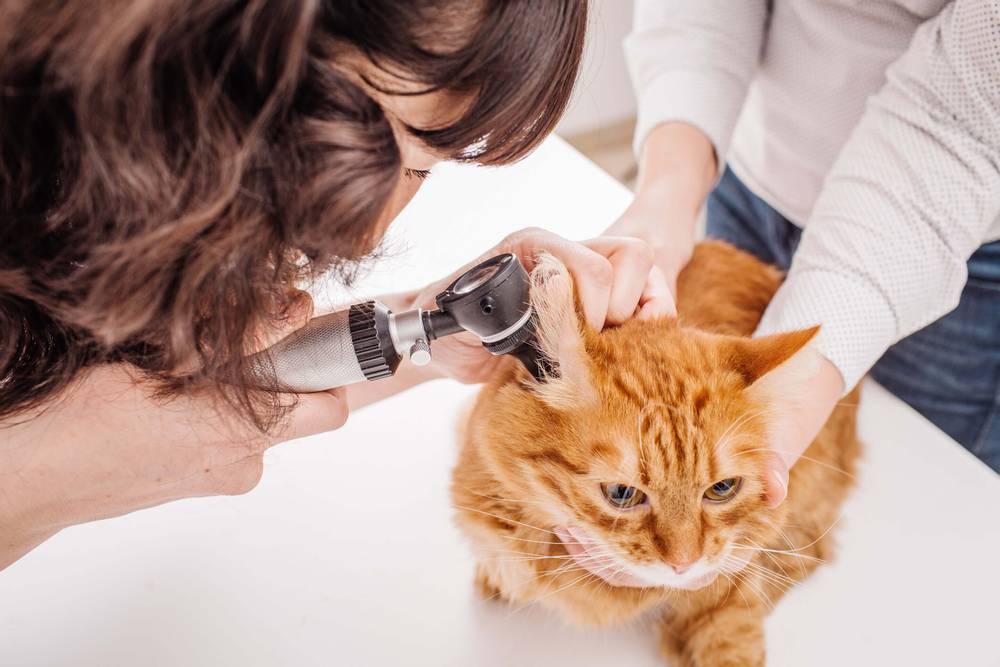
Contents
Ear Diseases in Cats: The Essentials
The organ of hearing in cats consists of three sections: the outer, middle and inner ear. Separately, you can select the auricle.
The most common symptoms of ear disease include itching in the ears of a cat, redness, discharge with an unpleasant odor.
If left untreated, otitis externa progresses to otitis media, and otitis media to internal.
In the initial stages, the treatment of ear diseases in cats and cats is usually not difficult, but advanced cases are difficult to treat.
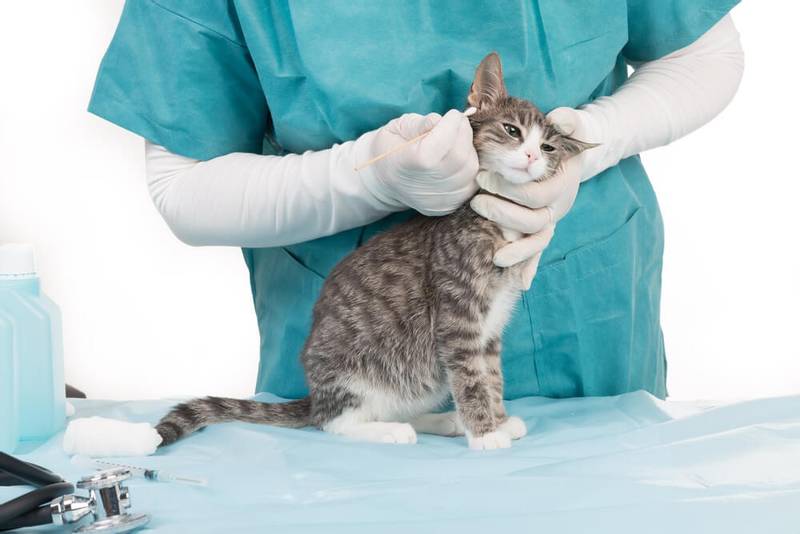
Diseases of the external ear in cats
Usually such problems are visible to the naked eye, but more research is required to clarify the diagnosis. Ear problems in cats include:
Otohematoma
Otohematoma looks like a swelling of the auricle. This is due to the accumulation of blood and lymph that flowed from damaged vessels between the skin and cartilage of the ear. The reason lies in the injury to the ear, most often the animal inflicts such an injury on its own when it scratches its ears due to severe itching. Itching, in turn, is almost always caused by a pathological process in the external auditory canal.
Otodectosis
This is a disease of the ears in cats and cats, which is caused by the scabies mite. This disease is transmitted only by contact of a healthy cat with a sick one. Kittens, as well as elderly and immunocompromised animals, are more susceptible to infection. The main sign of otodectosis is the presence of a large amount of dry, dark brown discharge in the ears. The size of the tick itself is 0,3-0,7 mm, it is possible to see it with the naked eye, but this is not always possible. The main diagnostic method is microscopy. Discharge is taken from the ears (it is well possible to do this with the help of a special curette – a surgical spoon), you can also use ordinary cotton swabs. Finding even a single adult or egg under a microscope is enough to make a diagnosis.
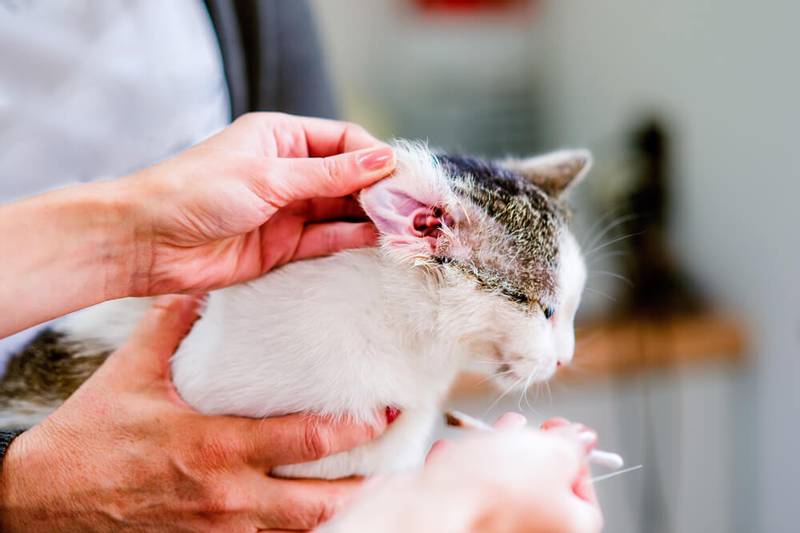
otitis externa
Most often, otitis externa is the result of some primary disease – for example, the presence of scabies mites, allergies, endocrine disorders, autoimmune diseases. It can also occur due to individual anatomical features of the structure of the ear, the presence of neoplasms, the ingress of foreign bodies. This type of ear disease in cats is usually characterized by itching, you can see how the pet scratches the ears and the area around them with its paws, shakes its head. You can see the redness of the ears. Allocations can be of a different nature and color: yellow, brown, black, wet, greasy, dry. By their appearance and smell, it is already possible to guess which pathogen will be found in the ears. Most often, during a cytological examination of secretions, bacteria (various cocci and bacilli) or yeast fungi (Malassezia) can be found, they are found in the ears even in normal conditions and are normal inhabitants of the external auditory canal, however, under favorable conditions (heat, moisture, violation of the protective barrier of the skin ) begin to multiply intensively, causing anxiety to the animal. If external otitis is not treated for a long time, it can turn into a form of deeper otitis media – otitis media.
Middle ear disease in cats
Middle ear disease in cats can be the result of untreated outer ear disease, it can progress from infectious diseases in the throat area through the Eustachian tube, and it can also be the result of the presence of polyps or neoplasms in the middle ear. This condition will be somewhat more severe than diseases of the outer ear. In an animal, in addition to discharge in the ears, one can note the tilt of the head to the side – the one that is affected. The auditory ossicles are located in the middle ear cavity, therefore, with inflammation in a cat, hearing loss can be noticed. You can find pain when trying to touch the ears, and there may also be soreness when eating. Often the appearance of Horner’s syndrome – the lower lip sags, the third eyelid appears, the cat cannot blink. During the examination of the ears, the doctor should pay attention to the condition of the eardrum: its protrusion, discoloration or rupture may indicate the presence of otitis media. To confirm the diagnosis, additional studies may be recommended: computed or magnetic resonance imaging and video otoscopy.
Inner ear disease in cats
Most often, internal otitis occurs as a complication of otitis media. This type of ear disease in cats can be extremely difficult, since the inner ear is located in close proximity to the brain. The animal will be lethargic, refuse food, body temperature may be elevated. Various nervous phenomena will be noted: staggering gait, uncoordinated movements, walking in a circle, twitching of the pupils. Then there is a complication in the form of meningitis, without help the animal may die. Computed tomography or magnetic resonance imaging may be required to confirm the diagnosis.
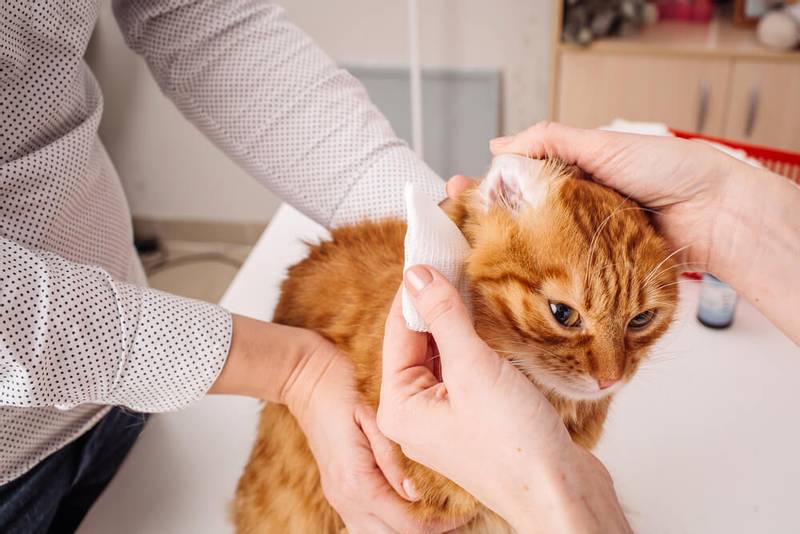
Symptoms of Ear Diseases in Cats
Symptoms will depend primarily on the place where the pathological process takes place. Most often you can see how a cat shakes its head, scratches its ears with its paws. If you look closely at the ears, you will notice that they are redder than usual. Dirt can be seen inside the ears, and a characteristic unpleasant odor can be felt. All diseases of the ears are considered extremely painful conditions, the cat may become more lethargic, start looking for secluded places, and not allow touching the head and ears. In advanced cases, gait disturbance will appear, the cat will fall from high surfaces.
Treatment of ear diseases in cats
Treatment of ears in cats should be started as soon as the first symptoms are detected. For the treatment of otitis externa, in most cases, the use of topical preparations is sufficient. In the presence of a large amount of discharge, the use of special lotions for cleaning the ears is recommended. Such lotions are poured into the ear in a large volume, they help soften the dirt, after which it is removed from the ear along with the lotion.
The use of cotton swabs to clean the ears is not recommended. Firstly, this is due to the anatomical structure of the ear in cats, which does not allow the stick to be inserted to the entire depth of the ear canal. Secondly, the ear is a rather delicate organ, and it is not difficult to damage the skin with a stick.
After the ear is cleared of secretions, therapeutic drops must be added to it. It is possible to determine which drops and with what composition are necessary only at a full-time appointment with a doctor, after an otoscopy and a cytological examination of ear discharge.
Treatment of otitis media and internal otitis media is a more complex process. This usually requires the use of systemic anti-inflammatory and antibacterial drugs. Often, deep rinsing of the ears is required. In some cases, surgery is indicated, up to the removal of the auditory canals.
It is impossible to treat cat ears at home without consulting a specialist because of such a wide variety of possible causes of the disease.
The article is not a call to action!
For a more detailed study of the problem, we recommend contacting a specialist.
Ask the vet
December 9 2020
Updated: February 13, 2021



